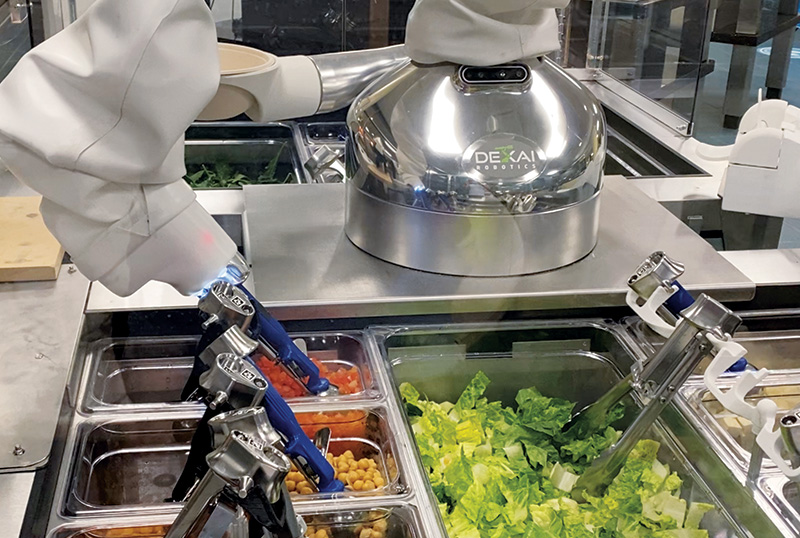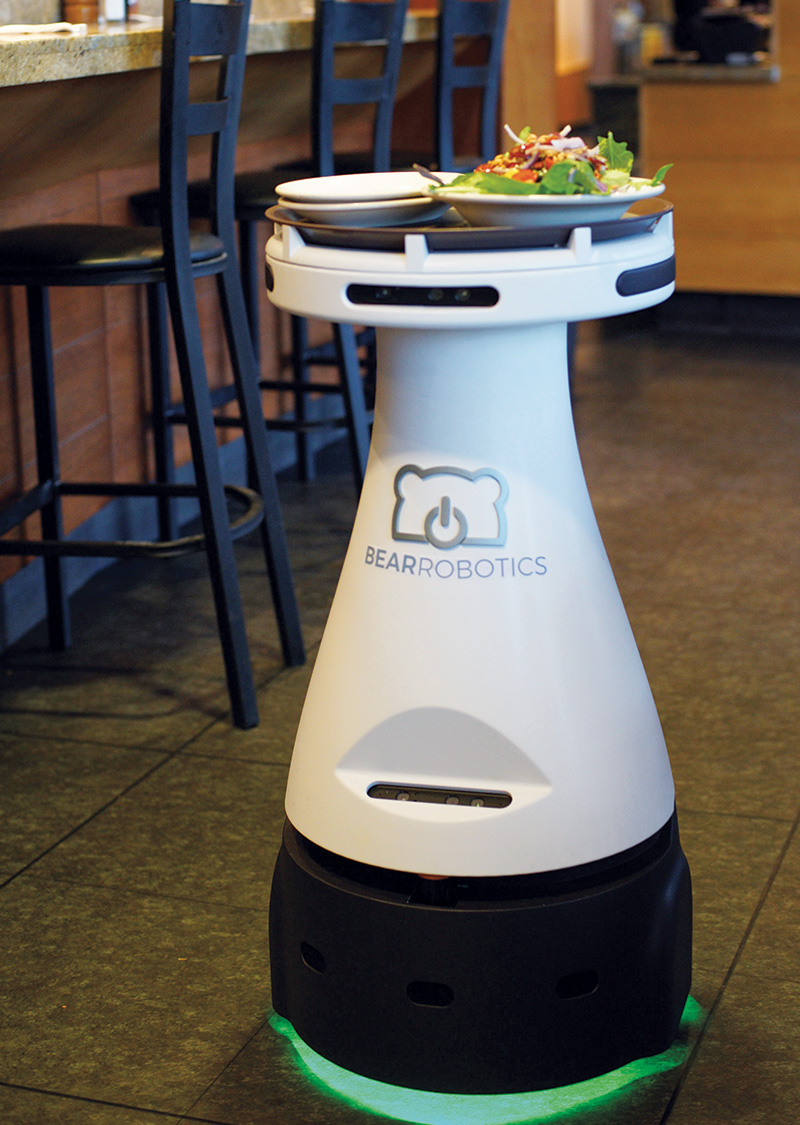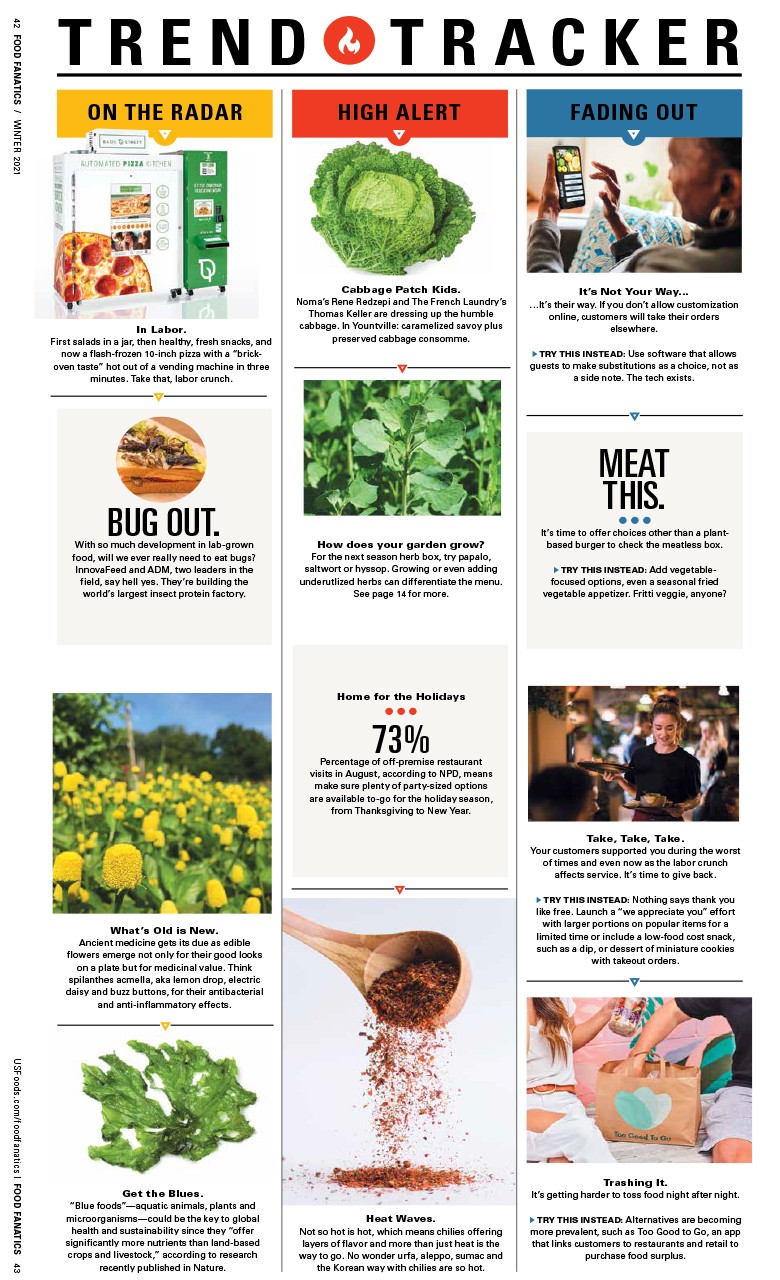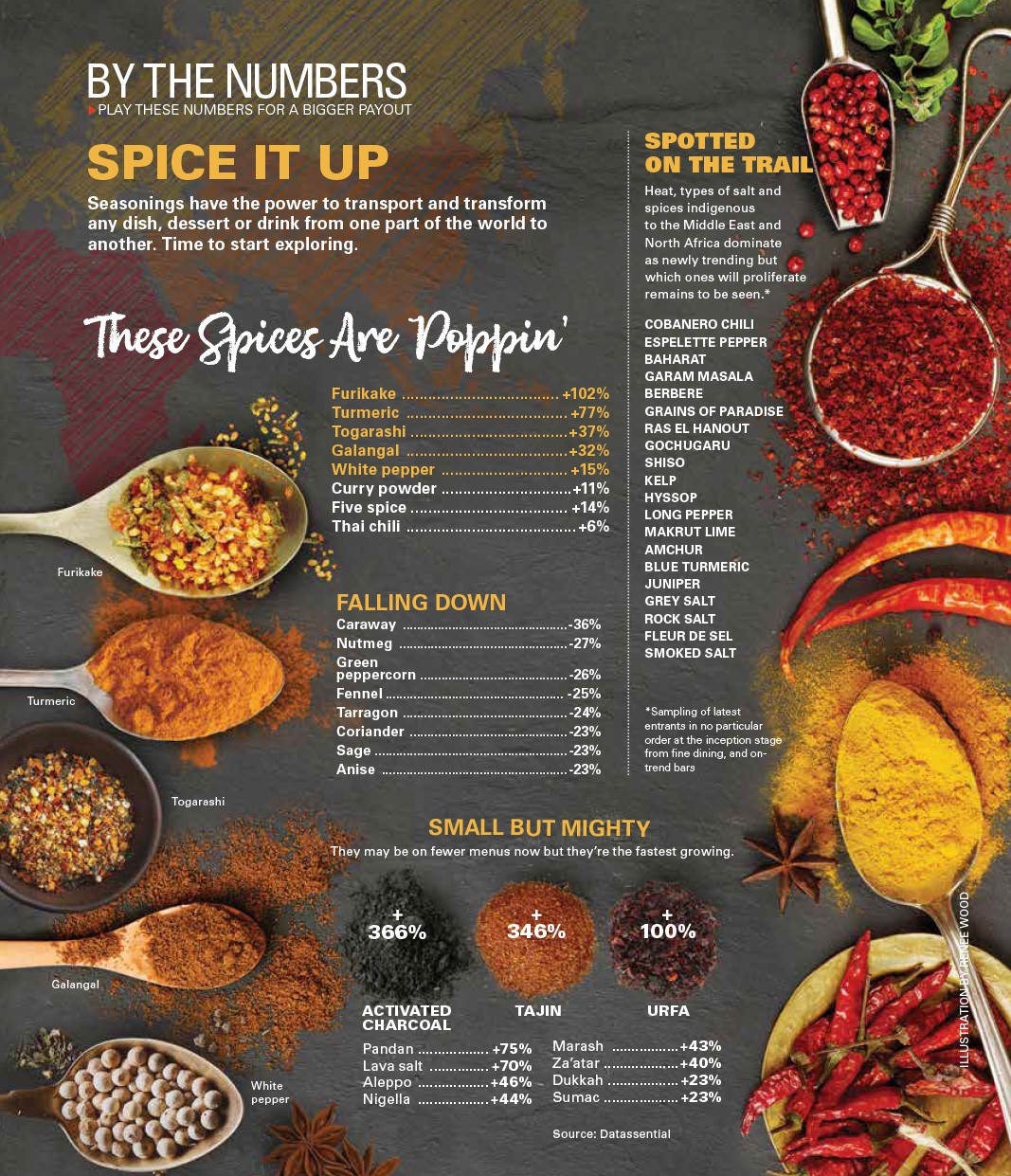TECH TO WATCH IN THE NEW YEAR
The pandemic and climate change push advances
 ▼
▼
Innovation in technology for the hospitality industry is abundant, hastened by the fallout of the pandemic and the light it shed on existing shortcomings. In a few words: the labor shortage and the environment.
Just how deep and widespread such advances will be adopted by the industry as a whole remains to be seen. But it’s safe to say that each innovation spurs another, adapting and filling another need that improves efficiency and the bottom line. Here are five poised to make an impact.
1. AI AND YOU
Marketing itself as the only “win-win solution in the restaurant industry,” Bite Ninja uses artificial intelligence and remote workers to take orders; they essentially run drive-thru services from home, their faces and voices still greeting the customer at the restaurant. Bite Ninja boasts improved order accuracy, reliability and an overall streamlined experience that both creates security and enthusiasm within preexisting jobs.
2. SERVERS ON WHEELS
Servi from Bear Robotics is another product that’s tackling front-of-house issues from the inside. Evolved since debuting in 2017 as the “Penny 1,” this automated server does exactly what you may think it does – it serves food and drinks. With a quick manual mapping and an overnight charge, Servi is programmed to stealthily navigate even the tightest of restaurant corners and ensure a safe and efficient dining experience – no full staff required.
3. PAY PER USE
 Like any new invention, costs can be prohibitive, especially for small businesses. But several companies are making tech advances more affordable, with low-priced subscription plans to make their products affordable even to smaller businesses. Dexai Robotics’ Alfred, for example, a robotic kitchen arm aid, takes advantage of a pay-per-use model, with restaurants paying a certain fee for every meal made by the bot.
Like any new invention, costs can be prohibitive, especially for small businesses. But several companies are making tech advances more affordable, with low-priced subscription plans to make their products affordable even to smaller businesses. Dexai Robotics’ Alfred, for example, a robotic kitchen arm aid, takes advantage of a pay-per-use model, with restaurants paying a certain fee for every meal made by the bot.
4. WHAT’S APP?
Expect more problem-solving apps, like Too Good To Go. It’s making fast inroads in reducing food waste by connecting restaurants, grocers and other food purveyors to customers who purchase their surplus at reduced costs. Earlier this year, the New York-based business expanded nationally and has signed on nearly 60,000 restaurants. While profits, if any, vary, less waste would benefit the bottom line.
5. FROM THE LAB
Fueled by the trend of healthier eating and the impact of greenhouse gas emissions from animal agriculture on climate change, the most far-reaching tech advances are happening in the lab. Lab-grown foods that mimic protein structures are poised to impact world hunger as well. For the past three years, Redefine Meat has been working to perfectly 3D-print meat down to a certain animal’s exact muscle structure, their machine building off of the science of plant protein to craft a new food entirely, something they call “New-Meats.” At Kingdom Supercultures, developers have tapped into the makeup of natural microbes and rearranged them to create plant-based foods that taste more similar to the real thing than ever before. “Supercultures” comes from the newly designed microbes, essentially reborn through precise fermentation processes, completely void of animal labor, plant/land usage and excessive energy. Besides meat, foods also being grown in labs include dairy products, seafood, honey and coffee.
LABOR RELIEF
Over the past several years, apps, software programs and point-of-sale systems have evolved to assist in just about every aspect of the food business, especially labor. They include apps that allow staff to fill and swap shifts, sales data to track and reward performance, past sales to better staff workers and so much more. Go to usfoods.com for leads.



